Evans Off Camber - Racing at Night

Close MO readers will have figured out that, between the six-day Sport-Adventure-Touring ride and the actual publication of the shootout, we took a tricked out Grom and raced it for 24 hours in a UMRA event. I won’t step on Troy’s story about the event by giving away any specifics, but I will say it was… an adventure. This was my third 24-hour endurance race (You can read about my second 24-hour race here), and in the hours after each one, I vowed that I will never do anything this foolish ever again. Of course, over time, the itch returns, and hopefully, after an appropriate length of time for my family and myself to forget the pain associated with a 24-hour, I’ll get another opportunity to scratch… on the track… at night.
Top 10 Honda Grom Modifications
After each of these events, I’ve found myself pondering what I find so compelling about 24-hour endurance racing. This time I needed to come up with answers quickly because my wife was asking me some pretty pointed questions right after I got home from the race. To wit: “What the f*ck do you guys think you’re doing? You know, you’re not in your 20s any more.” That’s why my Yankee wife appeals to this (formerly) Southern boy. She’s direct and doesn’t suffer fools. (Well, maybe one.) All I could think, as I hobbled around the house on seemingly permanently contracted quadriceps, was that there is a special kind of pleasure mixed in with the torment of endurance racing.
First, the basics. Any club racer owes it to her/him-self to try endurance racing. There’s no better way to log lots of seat time on the track. Some clubs that don’t offer endurance races do, however, offer GT races during the longest days of summer. These races are usually longer than your typical sprint races. Still, it’s about more than just the laps. Longer races force you to become a more efficient rider. Being all pumped up for a sprint race is pretty easy, but unless you’re super fit, you can’t maintain that level for an hour or more. Instead, you learn how to relax on the bike where the track allows. As you get tired, you may actually find that some portions of the track are easier because you’re fighting the bike less and allowing it to move around a little more. Then endurance races offer you the chance to refine your approach to troublesome corners and watch others who are quicker than you, lap after lap after lap.
But that’s not what I want to write about. I want to extol the virtues of racing at night – an activity I absolutely love. In my first 24-hour, the track was completely dark, save for the lights in the pits. My team’s bike was one of the only teams running HID lights that year, and our little EX500 spent a good portion of the darkness running around with and occasionally passing bikes that had ripped our lungs out during the daylight. My second 24-hour had lights at the flag stations at the entry of every corner, essentially making the track a connect-the-dots experience. This most recent race was on an overgrown kart track ( Grange Motor Circuit, in case you’re wondering), and consequently, the track was much smaller and lit by lights placed throughout the course (and no lights on the bikes). All three of these offered very different riding experiences.
When racing at night, reference points become vital. Since your view of the world is a tunnel of light from your bike or, for a short periods, the headlight of another bike, you’re forced to sharpen your knowledge of the track. In the dark, miss a reference point at speed, and your next clue of where you are may come in the form of the track edge – not something you really want to experience while dragging your knee at triple-digit speeds.
Additionally, details that weren’t obvious during the day become noticeable at night. You’ll know which bikes are running pump gas and which have race fuel. In high-speed sweepers, you’ll actually see smoke come off riders’ knee pucks. Every metal contact with the ground – be it toe sliders or footpegs or mufflers – put on a spark show.
Ironically, although you’re seeing and smelling things you might not in the daytime, darkness actually makes it easier to focus on riding. Remember, your visual world is much smaller, and the distractions are fewer. This is what attracts me to night racing (and night riding, too) the most. The world shrinks down to just the motorcycle, me, and the track plus the other riders. Naturally, riding with lights on the bike and not the track is the most immersive, but any racing at night is quite different from the day. Even during the UMRA event in which we raced with the Grom, with the track mostly lit, the track changes character dramatically.
Have you ever noticed at a club race how some riders will dramatically change their lines when the sun gets low on the horizon and ripples on the track start to throw shadows on the surface. The bumps were there at high noon, but they just weren’t visible. Still, the visuals freak some riders out. Well, night racing is the same only reversed. I found myself picking up speed in some corners at night (as referenced by my shift point moving up the track), and that change carried over to the next morning. What caused it? The corners I’m thinking about were on the darkest portions of the track, and I couldn’t see the dirt on the track from recent rains. By the time darkness fell, the racing line was clean, but I still never quite trusted the brown pavement. After dark, with a lessened visual reminder of the dirt, I found my speed picked up, making my line naturally change to accommodate the increased speed.
Really, though, all of this is just rationalization for the truth of why I like racing at night. Simply put, all racing is inherently stupid. We spend good money to go around and around chasing after plastic trophies while risking life and limb. Racing at night just increases the stupid exponentially. Brock’s Performance, who supplied us with many Grom parts for our race, has “Stupid Fast” as the company slogan. I totally get it because endurance racing is stupid fun. Although it has, at times, been miserable while it was happening and while I’m walking funny for the three days afterwards, endurance racing is just about the most fun I’ve ever had wearing leathers.
So, naturally this is what I said to my wife when she gave me the stink-eye daring me to stand upright and walk and not stumble around the house, right? Uh, no. I took the coward’s route, “Honey, this was a work thing. You know, all hands on deck. Like the six-day ride last week.” She was not convinced, but I lived to ride another day – smiling to myself as I shuffled slowly into the garage to unpack my gear.

Like most of the best happenings in his life, Evans stumbled into his motojournalism career. While on his way to a planned life in academia, he applied for a job at a motorcycle magazine, thinking he’d get the opportunity to write some freelance articles. Instead, he was offered a full-time job in which he discovered he could actually get paid to ride other people’s motorcycles – and he’s never looked back. Over the 25 years he’s been in the motorcycle industry, Evans has written two books, 101 Sportbike Performance Projects and How to Modify Your Metric Cruiser, and has ridden just about every production motorcycle manufactured. Evans has a deep love of motorcycles and believes they are a force for good in the world.
More by Evans Brasfield








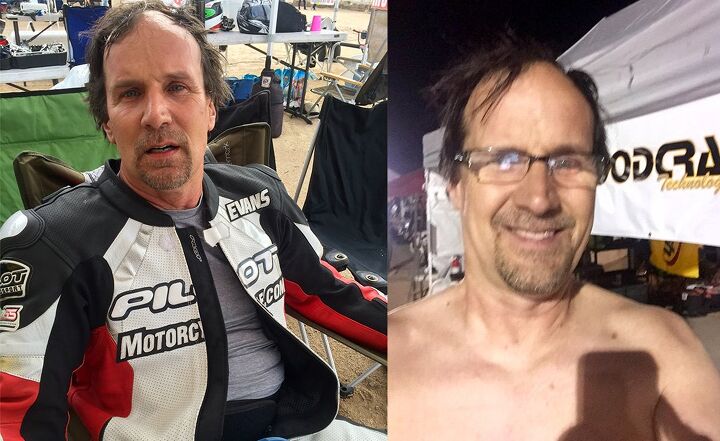








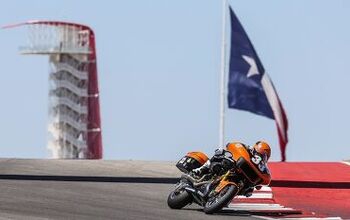

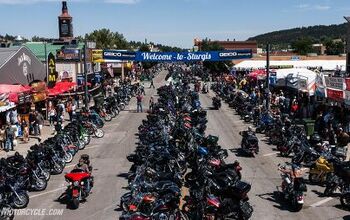



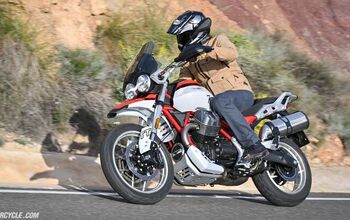
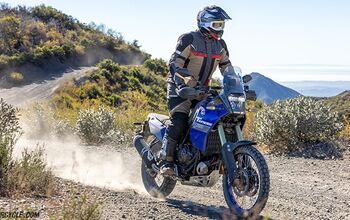

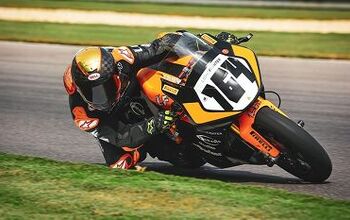








Comments
Join the conversation
Well, I guess I count myself a close MOronic reader. Congrats on your endurance and on your nocturnal reveling. Interestingly enough, I know exactly what your legs are going through. Thanks to Trizzle's original story about riding in the M1GP 24-hour race, I signed up for that event. This was the second year my team participated. No matter how vehemently you wife yells at you, it won't hurt as much as your quads do after racing long stints on those little bikes. Oh, but what fun!